City sidewalks, busy sidewalks, dressed in holiday style
In the air there's a feeling of Christmas
Children laughing, people passing, meeting smile after smile
And on every street corner you hear
Silver bells, silver bells
It's Christmas time in the city
- “Silver Bells” by Jay Livingston and Ray Evans
“Silver Bells,” like many other holiday classics, celebrate cities and the gathering spaces they offer during this festive season. As I wrote about back in 2021, the lights, displays, shopping, and events highlight walkability and the ways people engage with their communities. One holiday tradition I only briefly touched on, but think is worth exploring further, is the advent of the Holiday Village.
Holiday Villages, which are essentially mini-neighborhoods that pop up in public squares, are a German tradition stretching back as far as the 16th century. Filled with food and drinks, and plenty of small shops, these villages become key gathering places for both residents and visitors alike. The tradition has since grown across Europe and into the United States.
In Europe, Holiday Villages often include dramatic lighting displays with small, ornate sheds creating their own internal street network. Typically located in historic city centers, the traditional architecture around the squares are adorned with lights that highlight their features.
In the US, cities big and small have begun embracing these Holiday Villages.
New York City’s Department of Parks & Recreation build out several small villages across the City filled with small scale vendors and snack shacks. The village in Bryant Park offers free ice skating as well.
Pittsburgh’s Market Square sees itself transformed into an Alpine village throughout the holiday season, attracting both local and international vendors for visitors to enjoy. Market Square itself is lined with bars and restaurants year round, providing shoppers with plenty of places to extend their stay into the night.
Chicago’s Wrigley Field sees its new public square turned into Christkindlmarket Wrigleyville. The ballpark installs an ice skating rink just outside its walls and lines it with many German-inspired huts and local craft artists.
Closer to home, Rochester, for the past five years, has hosted the ROC Holiday Village in Martin Luther King Jr. Park. Similar to many of the larger Holiday Villages, the shops surround a public ice skating rink, offering fun activities for all ages. A fairly unique feature to Rochester is the Igloo Inn, which allows groups to rent large, inflatable igloos that are furnished in cozy, classic holiday styles.
So why doesn’t Syracuse have a Holiday Village? While it may be too late to get a village in place for the holidays this year, there is plenty for us to think about if we want to organize one for next year.
First, to consider its location.
Nearly all large festivals in the City of Syracuse take place in Clinton Square, and for good reason. Its wide open layout makes it easy to quickly build up and take down tents for vendors and performance stages. It is also the location for the City’s outdoor skating rink and municipal Christmas tree. At the same time, these are some of the reasons Clinton Square should not be considered.
Back in 2018 I reflected on some of the shortcomings of Clinton Square, from the lack of tree coverage and natural congregating spaces to the windswept feeling caused by short surrounding buildings that fail to address the square. When you compare Clinton Square to the location of Holiday Villages mentioned above, it lacks the desired “human scale” they display.
When discussing “human scale” in the context of a plaza, we are mostly considering the sense of enclosure they provide. Clinton Square, with its wide open area and relatively short surrounding buildings on 3 out of 4 sides, fails to provide any sense of enclosure. When you look at Bryant Park in NYC, which is more than twice the size of Clinton Square, the height of the surrounding buildings, along with its tree canopy, helps provide a sense of enclosure that is inviting.
The good thing is we don’t need to look too far to find a better option.
Hanover Square, located across S Salina St from Clinton Square, offers this sense of enclosure while also adding architectural interest and commercial activity.
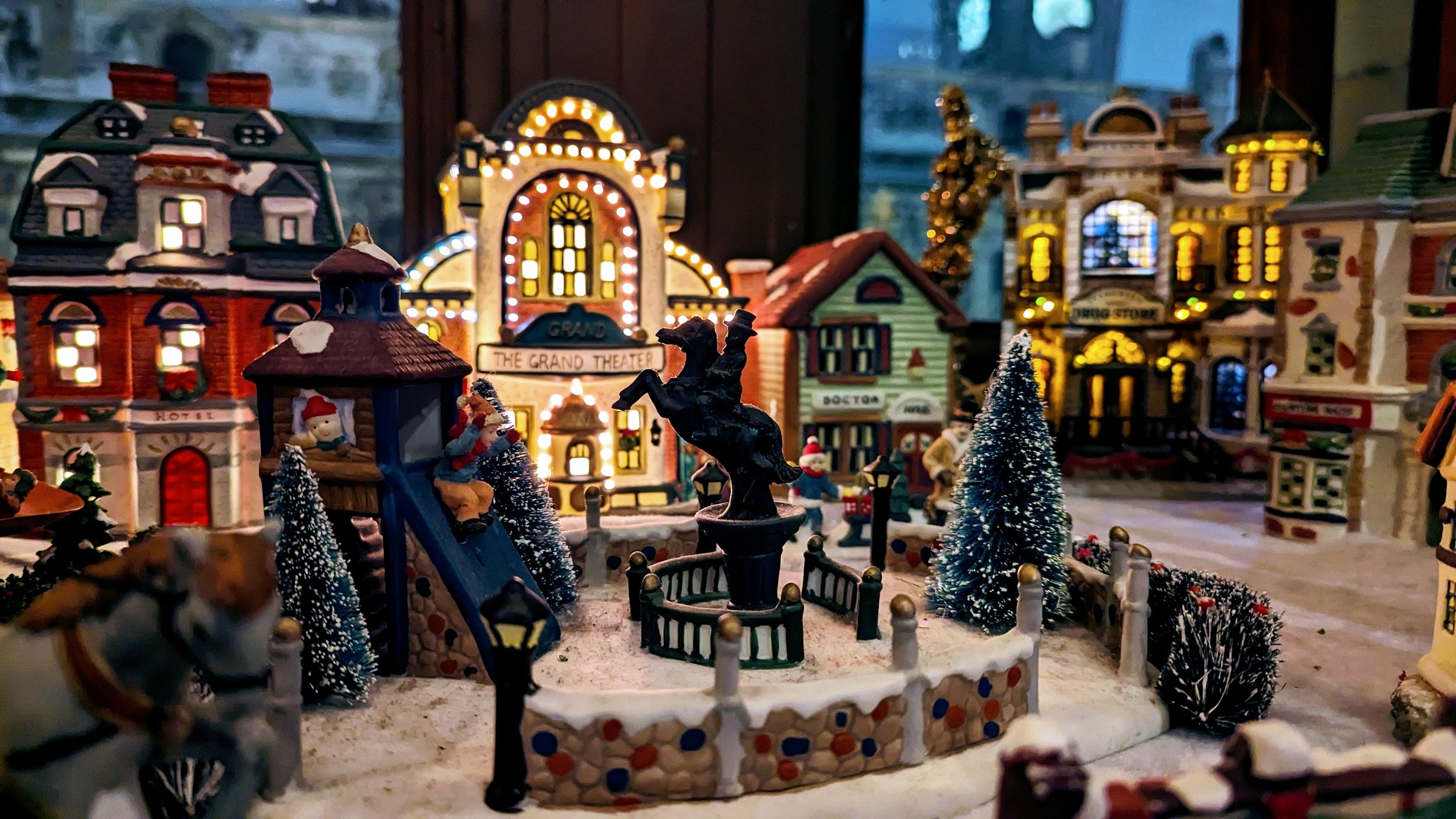
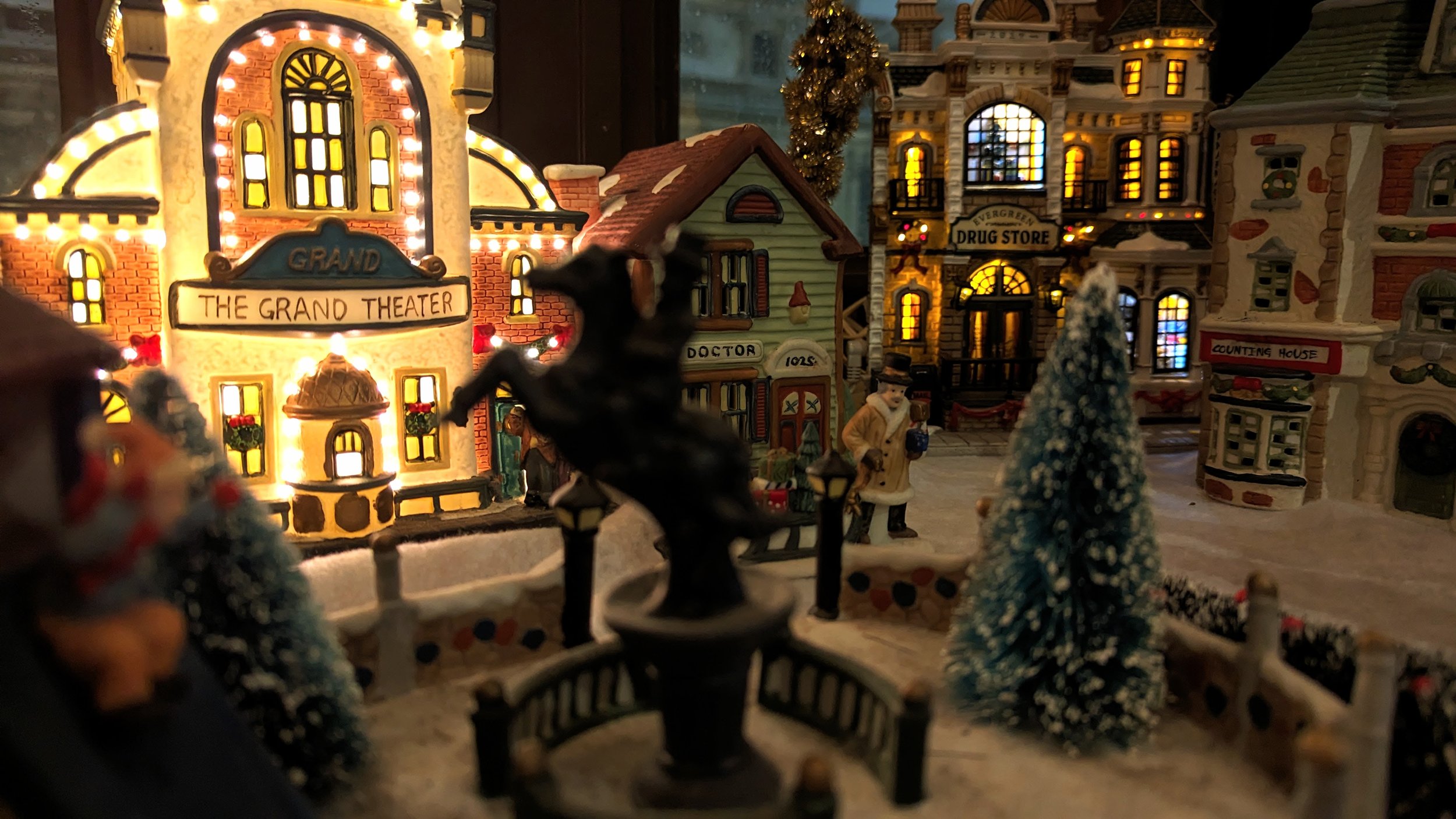
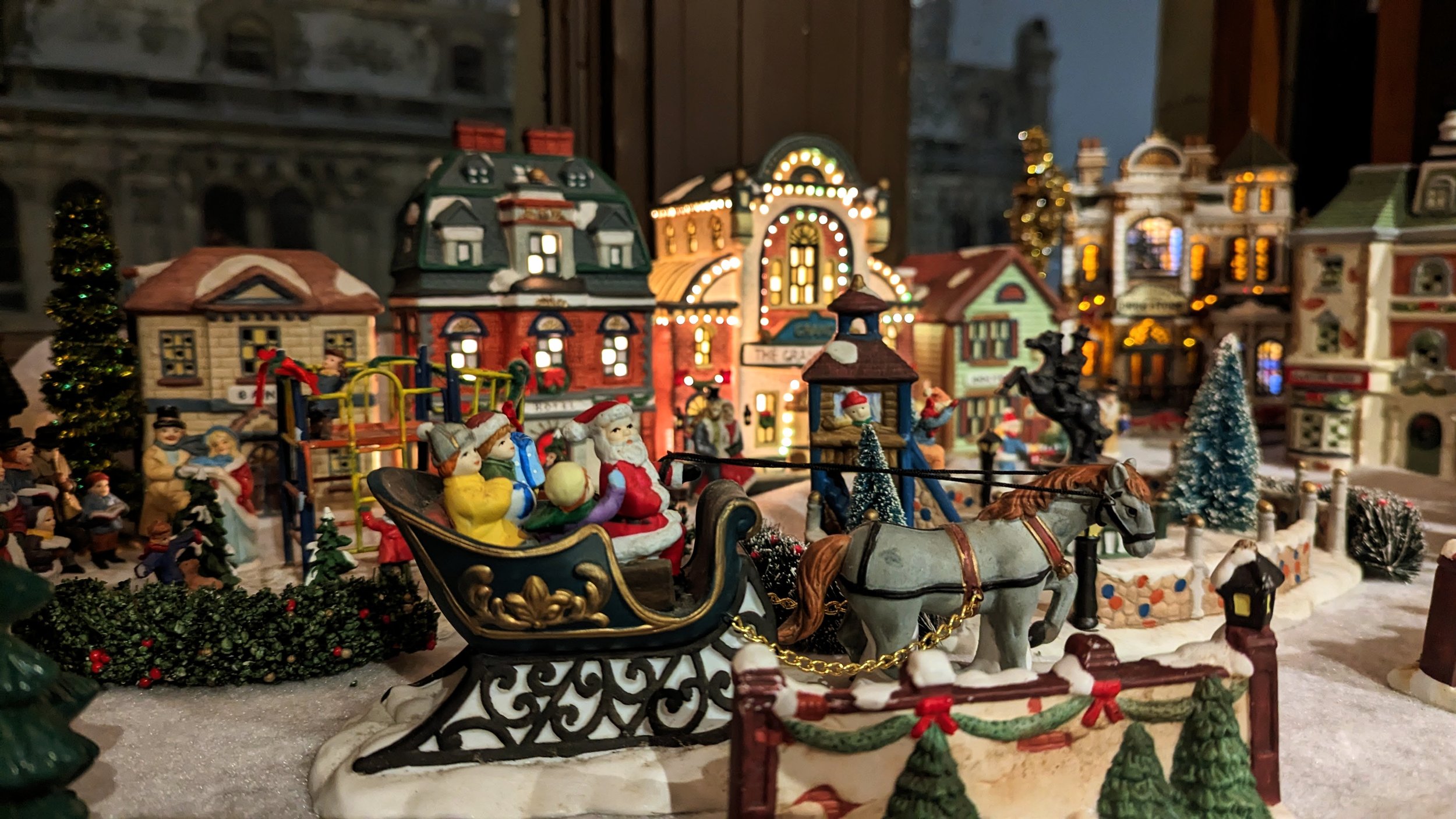
So many of our holiday traditions date back to the late 19th and early 20th centuries, from the look of Santa Claus to Christmas cards and carols. It is one of the many reasons the Christmas Villages many of us put up in our homes (including the one I put in my window above) typically mimic Victorian era buildings. Luckily for Syracuse, Hanover Square, the first commercial square in the City, still maintains many of these historic touches.
Adding to the architectural display, the square’s layout already emphasizes creating congregation points, with built in seating, perfect corners to gather, and a wonderful tree canopy. On top of this, the City has permanently closed two blocks of E Genesee St to through traffic, allowing people to flow between businesses without having to interact with cars. To add to this, the City should consider closing the 100 block of E Water St during the holiday season to open the square up further and create a true destination. For the past two summers, the City has closed the street on Thursdays during August to host Hanover Thursdays, a weekly concert series, which have been wildly successful. Closing the block for 3-4 weeks is a taller ask, but its a worthwhile endeavor. Should the event prove successful, similar treatments currently in place on E Genesee St should be explored, blocking cars from driving through but still allowing access when absolutely necessary.
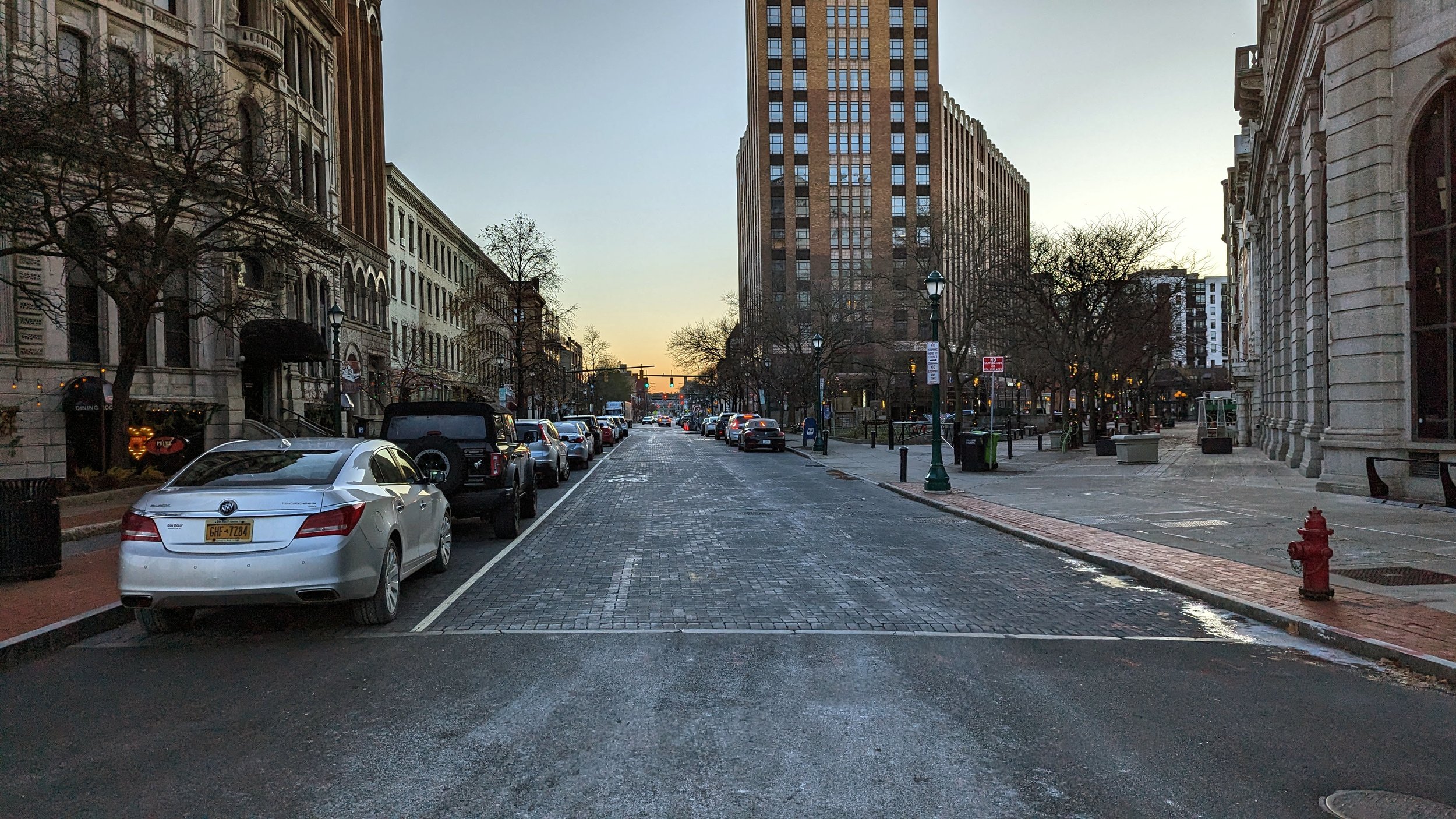
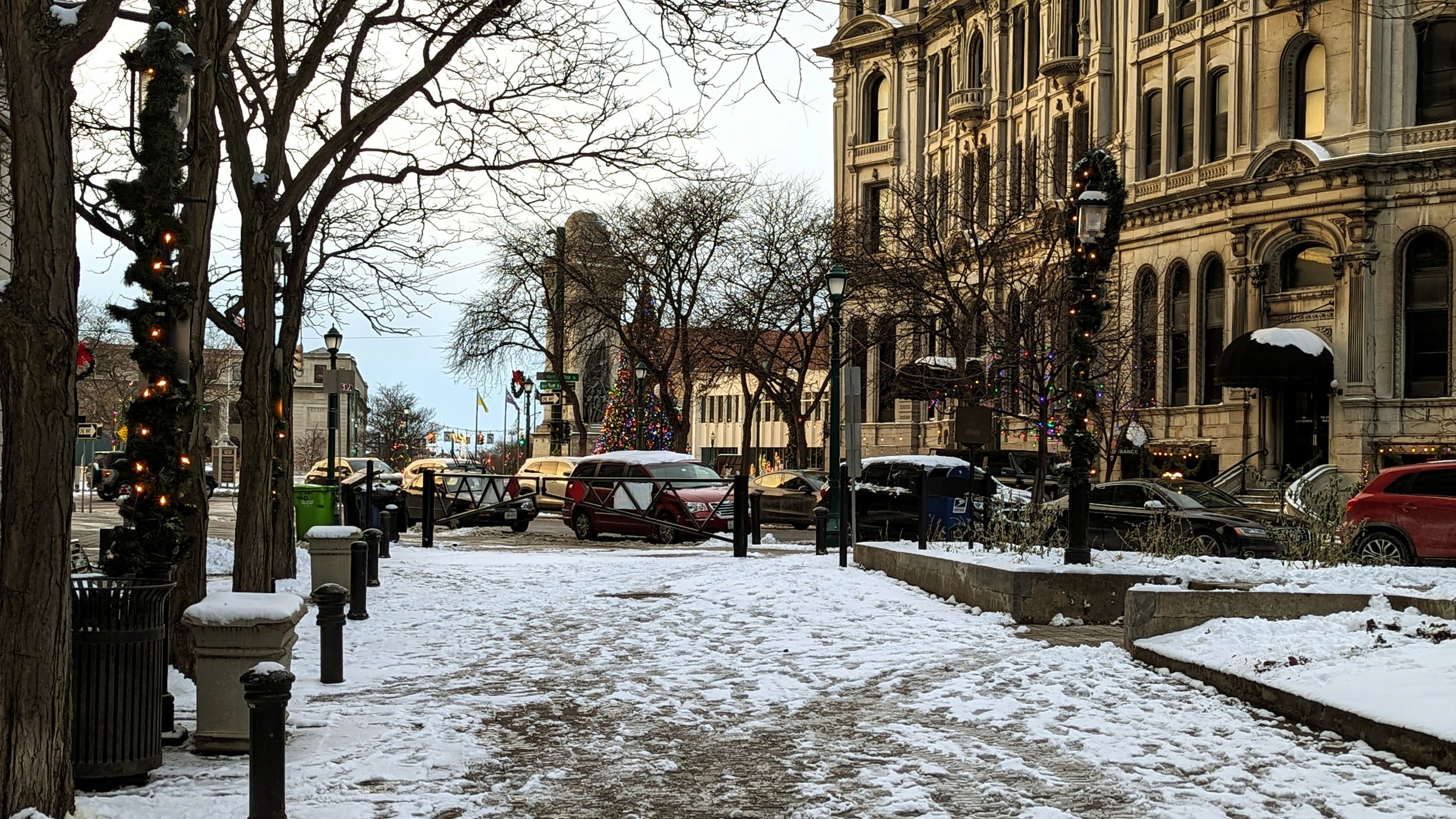



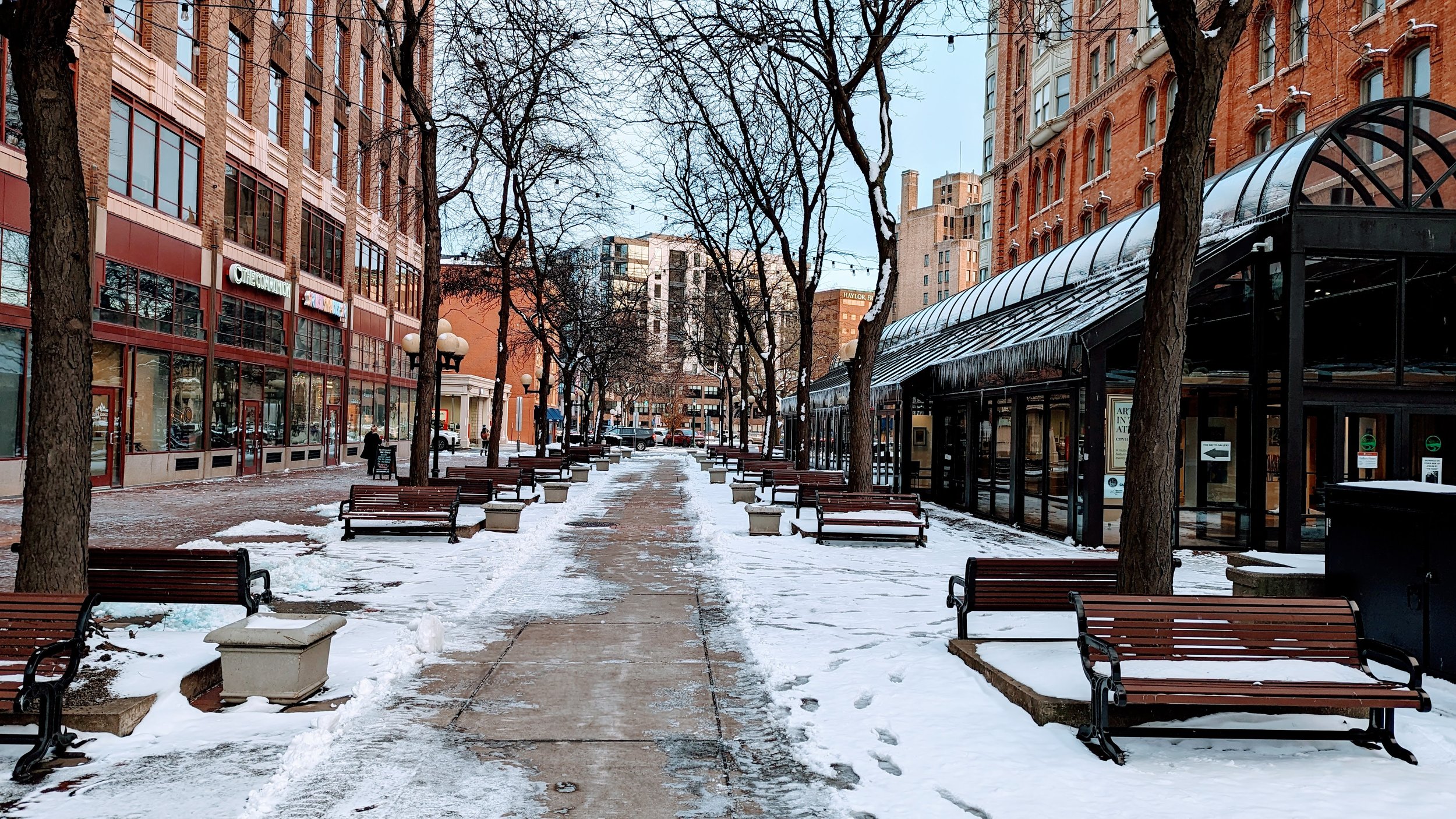
So what might this Holiday Village look like?
Hanover Square already finds itself covered in lights and wreaths, providing a festive spirit. During Hanover Thursdays, vendors at tables and under tents tuck themselves into the corners and along the street. A Holiday Village would need more sturdy structures than a simple tent. Wooden huts would keep with the more traditional vibes that many Holiday Villages aim to display. You could also aim for a slightly more modern vibe, using glass stalls similar to those seen in Bryant Park. Either way, they should be sure to open up towards the bars and restaurants that currently line the street while creating a more complex, maze like inner network of streets. Holiday Villages should be about wandering and bumping into experiences, not straight lines and grids, like so many of our city streets are.
For the second block of Hanover Square, where the Communion Wine and Spirits is located, the City should work with the new owners of City Hall Commons to open up the atrium for smaller craft artists to share spaces and provide opportunities for visitors to warm up. This block of Hanover Square always feels underutilized, likely due to only one store being present on it. By extending the Holiday Village to this second block, you help tie the two spaces together and can showcase what is already an architecturally beautiful space. With added traffic, and an introduction to this space, it may become more attractive to other business owners to locate, especially once City Hall Commons finishes its renovation and adds hundreds of residents.
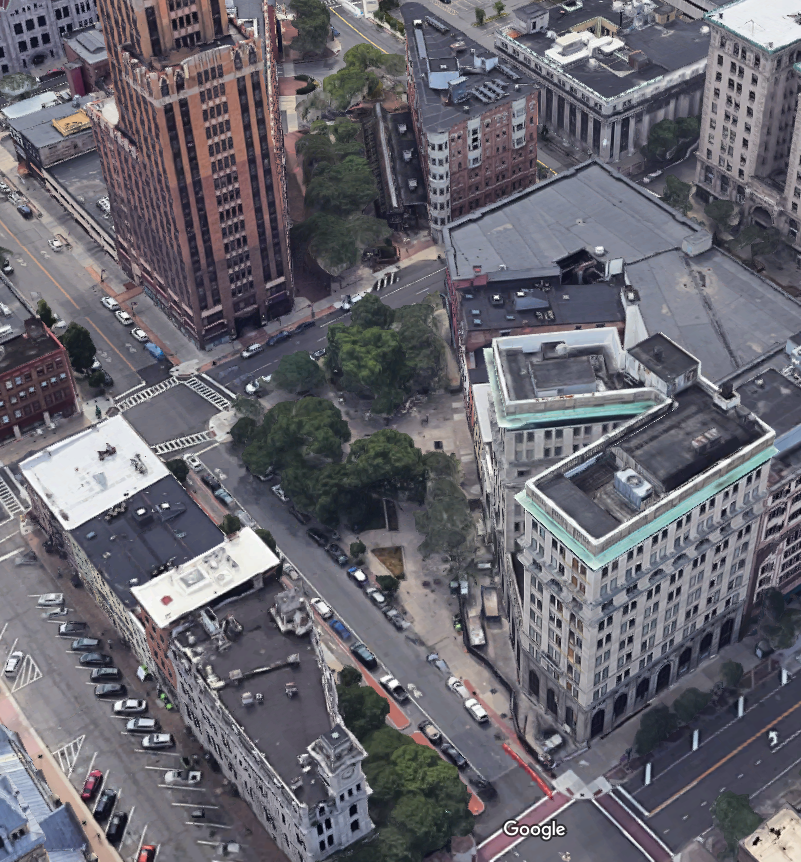
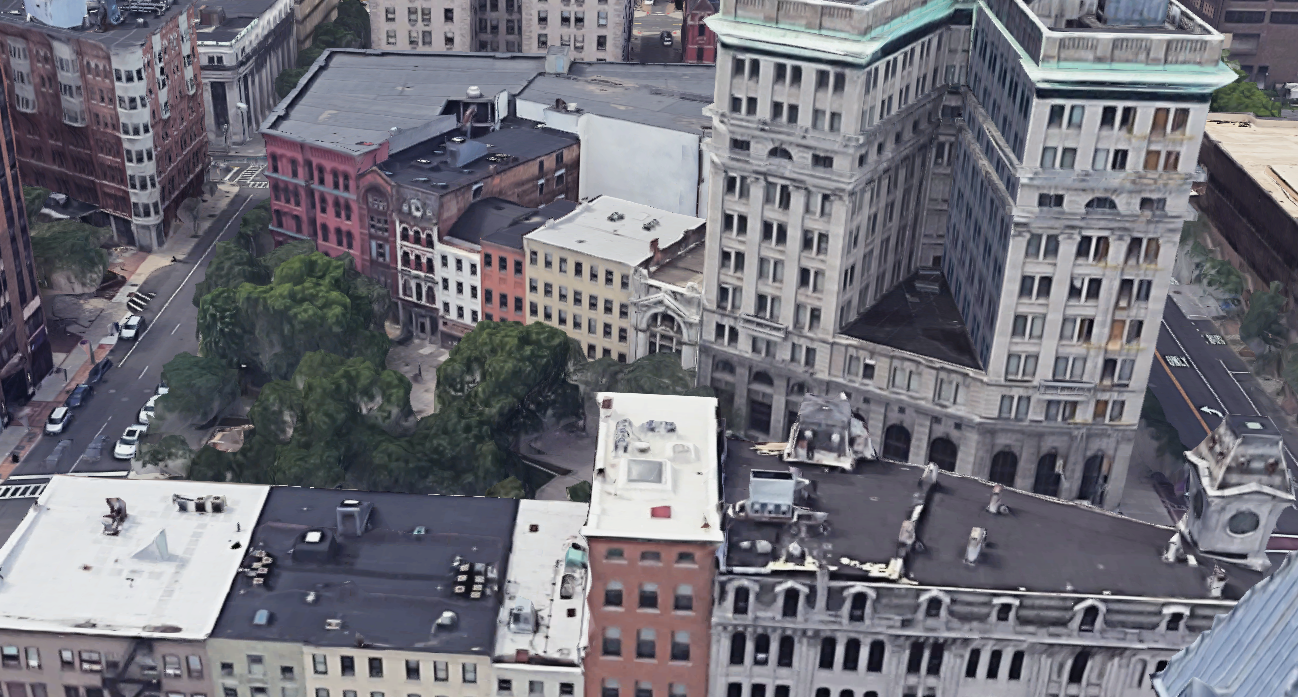
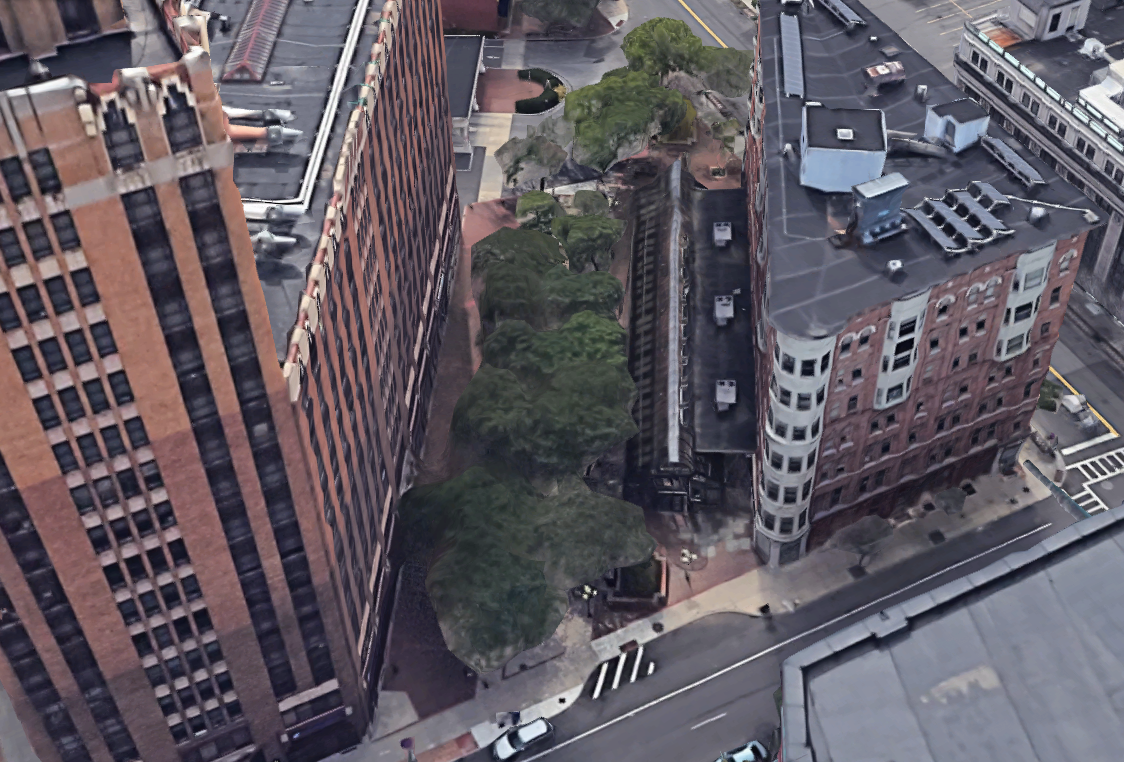
There’s many more logistics that would need to be worked out in order to build our very own Holiday Village, but the City of Syracuse deserves one. Syracuse is a city built on events and we struggle to translate that into every day activity on our streets. A Holiday Village that runs for nearly a month begins to bridge that divide. Short enough to still be an event, but long enough to encourage people to visit repeatedly and perhaps start to see the enjoyment of walking around Downtown to do their shopping. Let’s start building back that downtown culture and get ourselves a Holiday Village!







